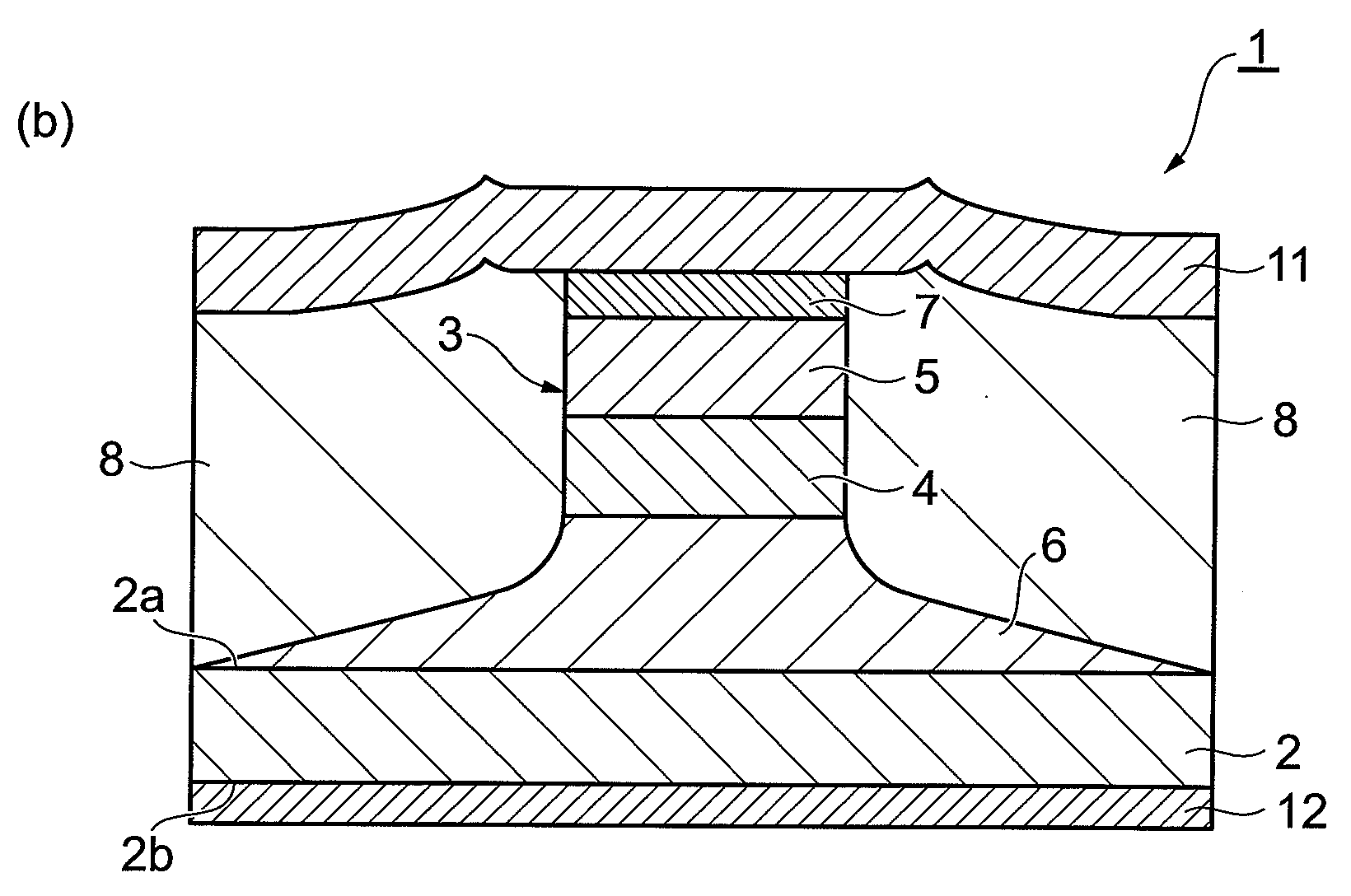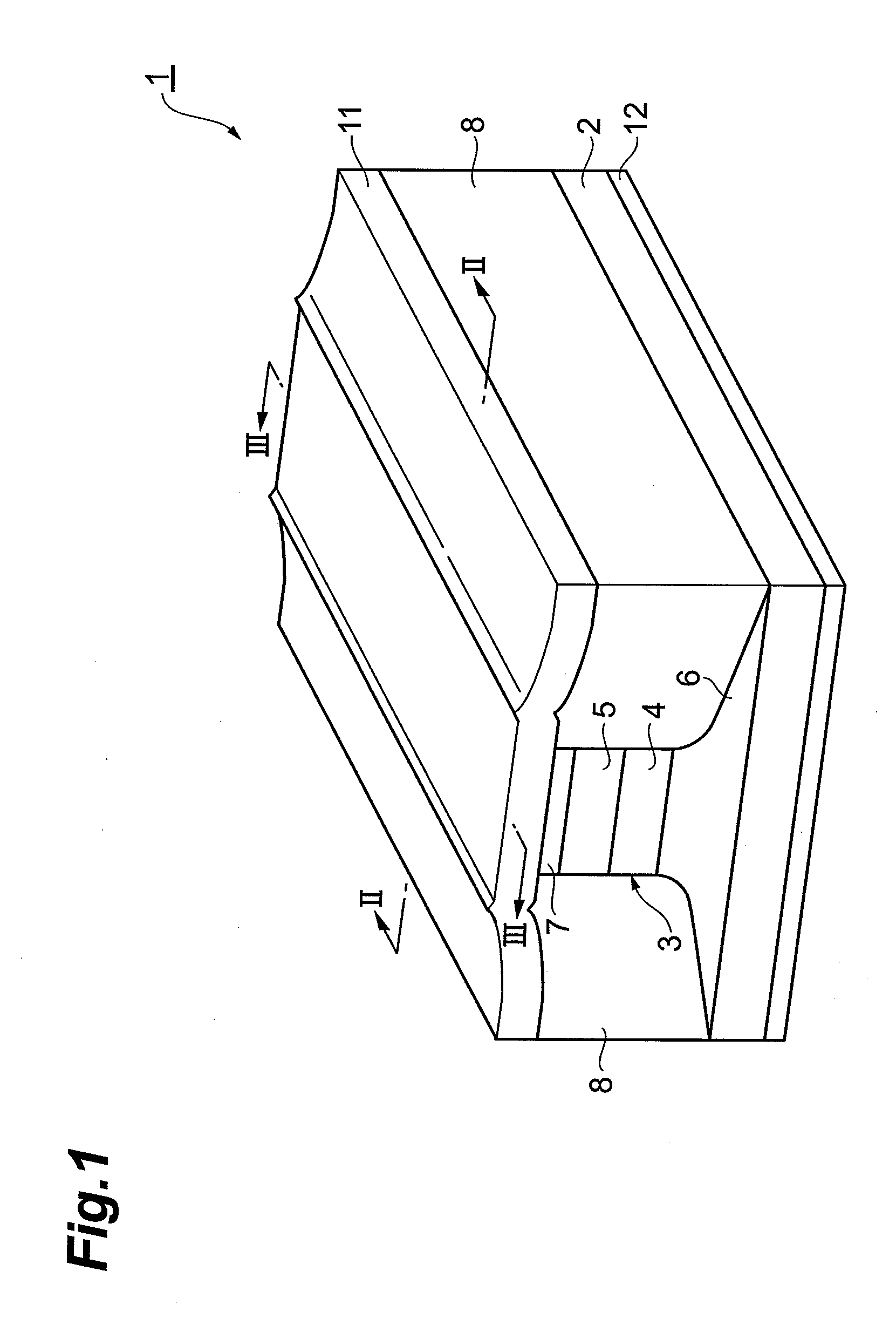Quantum cascade laser element
a quantum cascade and laser element technology, applied in the direction of laser optical resonator construction, laser details, optical resonator shape and construction, etc., can solve the problems of deteriorating laser element temperature characteristics, reducing yield and reproducibility, and unable to reliably cw-oscillation a single-mode light at room temperature or a temperature in proximity, so as to suppress the deterioration of laser element temperature characteristics and the decline of yield and reproducibility, the effect o
- Summary
- Abstract
- Description
- Claims
- Application Information
AI Technical Summary
Benefits of technology
Problems solved by technology
Method used
Image
Examples
Embodiment Construction
[0025]Hereinafter, preferred embodiments of the present invention will be described in detail with reference to the drawings. Also, the same or corresponding parts are denoted with the same reference numerals in each figure, and overlapping description will thus be omitted.
[0026]FIG. 1 is a perspective view of an embodiment of a quantum cascade laser element according to the present invention, FIG. 2 is a sectional view along a line II-II of FIG. 1, and FIG. 3 is a sectional view along a line III-III of FIG. 1. A quantum cascade laser element 1 is a DFB element that oscillates a single-mode light, and formed in an almost rectangular parallelepiped shape. On one major surface 2a of a substrate 2 having a rectangular thin plate shape, a laminate 3 having a stripe structure is formed. The laminate 3 is formed, with the longitudinal direction of the quantum cascade laser element 1 set as a stripe direction (resonance direction of light), so that a section orthogonal to the stripe direct...
PUM
 Login to View More
Login to View More Abstract
Description
Claims
Application Information
 Login to View More
Login to View More - R&D
- Intellectual Property
- Life Sciences
- Materials
- Tech Scout
- Unparalleled Data Quality
- Higher Quality Content
- 60% Fewer Hallucinations
Browse by: Latest US Patents, China's latest patents, Technical Efficacy Thesaurus, Application Domain, Technology Topic, Popular Technical Reports.
© 2025 PatSnap. All rights reserved.Legal|Privacy policy|Modern Slavery Act Transparency Statement|Sitemap|About US| Contact US: help@patsnap.com



